Photo

R.I.P. Eli Noyes 1942-2024
The world lost a wonderful man and a unique talent when friend and pioneering filmmaker Eli Noyes passed away this week.
Eli was one of the early independent animators we were lucky enough to work with at the dawn of MTV, and when he partnered with another innovator, Kit Laybourne, we were able to enjoy the two of them for the next decade at The Playboy Channel, Nickelodeon and Nick-at-Nite.
Cartoon Brew will give you a fantastic overview of Eli’s groundbreaking films on their obituary, and there are some word about our collaborations below.
Alan wrote a loving remembrance of Eli on Facebook that’s re-posted here:
In the early days of my TV career I became successful at playing the part of an expert, which was handy considering I had absolutely no idea what I was doing. Honestly, none of us did. Thanks to the cable explosion the TV universe was expanding faster than the talent base, and we were all thrust into jobs that never existed and for which no pros could be located to fill. Tasked with managing the visual identity of MTV and then Nickelodeon, my creative partner Fred Seibert and I relied heavily on a handful of creators who weren't mired in the ideas and the rules of the legacy business, and were eager to go on a journey with us as we looked to invent a new way of connecting with audiences that made our networks infectious.
One of those creators was Eli Noyes, at the time a renowned independent animator who is largely credited with establishing new heights and achievements for stop motion animation. Somehow we got introduced to his work and saw his reel, and as rule breakers and nonsense makers we were instantly attracted to his work. (Go online and look for a stop-motion piece he did where he makes and devours a couple dozen peanut butter and jelly sandwiches, and you'll get some sense of what we loved about his spirit.) We contracted with him to do a few pieces for MTV. I don't know that he ever did any commercial work before our assignment, but that was typical of our approach. Our creative brief was always extremely open. "We are hiring you because we love your work. We don't need to see pitches first. You have the job. Now blow us away." Not everyone responds well to that kind of freedom, but Eli was a gamer.
I think he had done one or two pieces for us when he called me up to do a field trip to New York Institute of Technology on Long Island, where there was a lab that was doing some of the very first digital animation. We drove out to have a look in case there was something there we wanted to tap. I remember being impressed by their ability to use tablets instead of pencils, but confused when they told us, "Look, we can make it look just like traditional animation." When we left, Eli perfectly voiced my unease. "Why would you want to?" he asked.
And that was Eli. Always thinking about what's next. What can we explore? Where can we go that no one's gone?
The real flower of his creative potential was unleashed at Nickeloden, when he had teamed with the brilliant animator, author, professor, and thinker Kit Laybourne. My former partner Fred is going to repost some of their work so you can see what these demented dudes did for us. As much as I loved the work, I loved the creative meetings just as much. Eli and Kit were like animated characters themselves. They didn't just describe the piece they wanted to make, they bounced around the room acting it out. Their commitment and devotion to nonsense and playfulness was infectious and impossible to ignore. No two pieces were alike, perfectly fulfilling our dream of introducing and perfecting a more fluid and dynamic look for an audience that was itself evolving, growing, changing, and... becoming.
We lost Eli Noyes on Saturday and I am absolutely stricken with grief. It's been decades since we've spoken, but he is so much a part of my life and my development as a creative executive. Along with being phenomenally talented, he was sweet, soft-spoken, generous and kind, with the most mischievous eyes that widened when he heard something that could be the germ of a new approach. He never lost his hunger to invent. I've never met an adult whose spirit was closer to Peter Pan's.
I can't say this strongly enough. My ex-partner and I get a lot of credit for introducing a new way of communicating identity to audiences thanks to the hundreds of animated pieces we produced in the early years of our networks. We would have been nothing without Eli Noyes and four or five more who enthusiastically embraced our direction and fulfilled it beyond anything we could have envisioned.
I loved him and I will miss him. He is in my heart forever. RIP Eli Noyes.
#####
It might have been Gerry Laybourne who first put Eli’s reel on our desks when we were getting MTV’s identity together. Having already shown our distaste for the typical commercial houses we had already started luring indies into our fold. And, in many ways, Eli was the king of the East Coast filmmaking indies. Soon enough, Alan was producing –and learning!– from Eli, who was a relentless and kind forward thinker.
vimeo
Three years later, we’d started Fred/Alan and, lucky again, we got the assignment to start working with what was to become the “new” Nickelodeon under Gerry’s guidance. Eli had already hooked up with Kit Laybourne with the last of our MTV collabs, and now they were on fire with ideas for us at Nick. Clay (Eli’s sweet spot), video (then new to animaton), whatever. In the haze of the years, it’s hard to remember who suggested how to reuse animation for budget stretching and happy surprises (we all loved “Hey Rocky! Watch me pull a rabbit out of my hat!”) but, it worked like crazy for Nickelodeon.
vimeo
In the late 80s, after we’d successfully shown Nickelodeon that 1) branding and promotion, properly and creatively managed, could pull a rating rabbit out of a hat, and 2) that Nick-at-Nite “reruns” could be financial and cultural gold, some genius (shhhh, it was the sales department) decided that reruns were a loser and that Nick-at-Nite needed to be “comedy!” Which required a re-thinking of the network’s presentation. How to hold on to our already established identity, but maybe be a little “comedic” too? Eli and Kit (and Rocky and Bullwinkle!) to the rescue, along with our go-to Fred/Alan producer and in-house audio wizard, Tom Pomposello. Roping in Nick’s and Fred/Alan’s staff of stand-in actors, Noyes & Laybourne were able to create dozens (and dozens) of network identifiers to keep folks amused, so that that when the sales group came to their senses, the NAN audience would still be there.
vimeo
Thank you Eli. We’ll never forget you.
.....
MTV spots 1981-82
Director: Eli Noyes and Eli Noyes & Kit Laybourne
Producer: Alan Goodman
Creative Director: Fred Seibert
Nickelodeon 10-second network identifications 1984-87
Created & Directed by Eli Noyes and Kit Laybourne, Noyes & Laybourne, New York
Nick-at-Nite 10-second network identifications 1987-90
Directed by Eli Noyes and Kit Laybourne, Noyes & Laybourne, New York
Sound design/music: Tom Pomposello and Tom Clack
Fred/Alan producer: Tom Pomposello
#Eli Noyes#Nickelodeon#MTV#Nick-at-Nite#Kit Laybourne#Gerry Laybourne#Tom Pomposello#network IDs#branding#positioning#Noyes & Laybourne#Rocky & Bullwinkle#Tom Clack#1987#1989#Fred Seibert#Alan Goodman#1981#1982
0 notes
Video
vimeo
Set him on fire.
Five years after Fred/Alan was founded, we'd become a bona fide, full service advertising agency. The distance between being founding employees of MTV and being under the thumb of channel marketing executives was becoming really annoying.
Each person at MTV had evolved a different set of standards to describe the place. Anyone who didn't agree, even their own co-workers, was derided as someone who didn't "get it." And as the people who led the effort to develop the original "hymn sheet," we decided we needed to do something about it.
Alan wrote the first official "positioning" paper for MTV. Logically argued, well written and vetted from top to bottom at MTV, there was one section that wrapped their ethos up perfectly.
"Watching TV is predictable.
"Watching MTV is reliable,
not predictable.
"It's Normal TV vs. MTV."
Or, as a future programming head would put it when deciding whether or not to greenlight an MTV show:
"Does it have that 'fuck you?'"
With this positioning, not only could we have a yardstick that everyone could agree on, but could guide our future advertising efforts.
The so-called "Burning Man" campaign followed this strategy perfectly.
The core phrase of print, outdoor and TV advertising paraphrased directly from Alan's paper:
"TV? or MTV!"
The featured players? Rock stars –like Jon Bon Jovi, John Mellencamp, The Bangles, Cindy Lauper, Cher– natch. And... the Burning Man.
MTV had been such an influence on all of television that hosts started shedding their stiff formalities, including everything from hair styling to costuming.
We thought that MTV's reaction to "normal TV" trying to cop its informalities would be to put our spokesperson in a suit and tie. But how did a well dressed man represent MTV's rebellion?
Set him on fire.
Of course. The challenge in those pre-computer graphics days was that we had to actually set the guy on fire. (Watching the outtakes was harrowing, as Alan and Ed Levine had horrified faces when it looked like his hair might have flamed up too.)
The ads were shot as 10 second segments which were then mixed and matched into a dozen different spots that could make watching them, over time, always fresh. Oh, and don’t forget to add in some great MTV logo animations from Marv Newland at International Rocketship in Vancouver.
#MTV#advertising#commercials#TV commercials#IWMM#consumer#1987#Jon Bon Jovi#Cher#Cindy Lauper#The Bangles#Burning Man#Smittee#Marv Newland#International Rocketship
0 notes
Photo

1991 Fred/Alan holiday party invitation. Illustrated and designed by Tom Godici.
The last Fred/Alan holiday party! 1991
As we’ve posted before, we never really understood the “standard” protocols of running a successful agency, wining and dining clients with expensive dinners, golfing outings (you’ve got to kidding!) and annual holiday gifts. Our version was killer holiday parties.
Things really hit a peak in 1987, when former Ed Levine, account executive and former music promoter/producer/now food writer, suggested we book Dr. John* for our soiree. Creative director Noel Frankel illustrated an amazing invitation (with Wite-Out®!), and we booked a belly dancing school studio on 8th Avenue. Sylvia’s catered the soul food, the doctor’s band came on their night off and blew the ceiling off the place. What a night!

1987 Fred/Alan holiday party invitation. Illustrated and designed by Noel Frankel.

1989 Fred/Alan-Chauncey Street holiday party invitation. Designed by Noel Frankel.
Afterwards, we wondered if the parties could get any better, but from that year on we tried pretty hard to top ourselves. By our last party we just might have done it.
We didn’t know it was our last hurrah. We’d just moved into a new space that we’d designed for ourselves, we were celebrating. For the December 1991 party the entertainment booked was the Calypso Kind of the World, Mighty Sparrow, known to getting entire Caribbean stadiums on their feet to dance. By the end of his contracted second set in a downtown restaurant, Sparrow’s shirt had come off, the crowd was sweating as much as he was, and he assured us he wasn’t done yet and came back for another couple of hours!
For some reason, Art Director Tom Godici thought it would be worth his time to burn the edges of all 500 holiday poster invitations by hand. We weren’t arguing, Tom always made sure his work was up to his personal creative standards. He lived them.
*Ed and Dr. John/MacRebennack had done a couple of wonderful records together, and Ed later suggested him for a fantastic campaign we did for TV Heaven.
#self promotion#poster#holiday#Christmas#invitation#party#print#Tom Godici#1987#1989#1991#MIghty Sparrow#Noel Frankel#Dr. John#Ed Levine#Chauncey Street
0 notes
Video
vimeo
777-FILM
Moviefone
1990
“Hello!
And welcome to Moviefone!”
-Russ Leatherman, ‘Mr. Moviefone’
[In-movie theater commercial]
Sound effect: telephone busy signal
Announcer:
There one phone number for movie
showtime information that’s never busy.
Find out where and when it’s playing.
Call 777-FILM.
When all that matters is the movie.
Before there was a consumer internet, getting to the movies was a pain. Even figuring out whether a particular movie was playing in a given week at what theater required a logistic enterprise. It usually involved getting a local newspaper and sifting through columns of “listings” to figure out what showtimes were. You couldn’t be sure if there were tickets available and whether or not there were a few next to each other. Or whether they were in the front or back rows, and squeezed you in the middle of a long row. Heaven forbid, if you lived in a city with dozens of movie houses.
Enter entrepreneur, innovator and filmmaker Andrew Jarecki. Partnering with the original conceptualizer Russ Leatherman, they founded Moviefone to solve the problem. Just dial 777-FILM and life got easier. Now you could immediately know what movies were playing where, at what time, and whether there were ticket available. Voilà!
We met Andrew through our friends at Charlex and signed on as Moviefone’s first agency. Together, we quickly came up with several spots that would play in their partnered theaters and starting running them in New York and Los Angeles.
Lo and behold! Moviefone was ringing off the hook, maximizing theater –and Moviefone!– profits. Soon, Andrew had figured out how to use call volume to predict ticket demand, which allowed film producers to target their advertising to optimum effect, and of course, more success for all!
The company was acquired by AOL at the height of the first internet craze. Andrew went on to become an Academy Award nomimated filmmaker (“Capturing the Friedmans”) and produce and direct “The Jinx” for HBO and “Catfish” for MTV.
…..
Actors: Albie Hecht & Paula Brinkman
Director: Albie Hecht
Producer: Chris Strand
Production: Chauncey Street Productions
Agency: Fred/Alan
2 notes
·
View notes
Photo
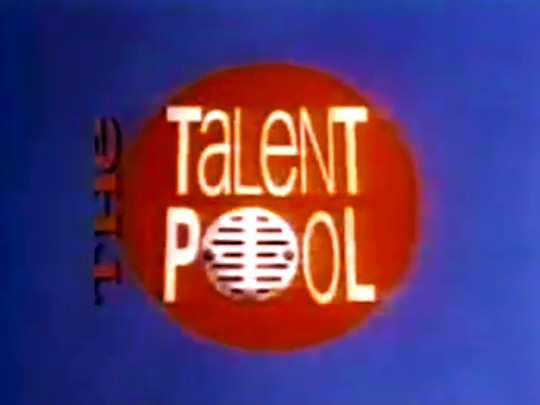

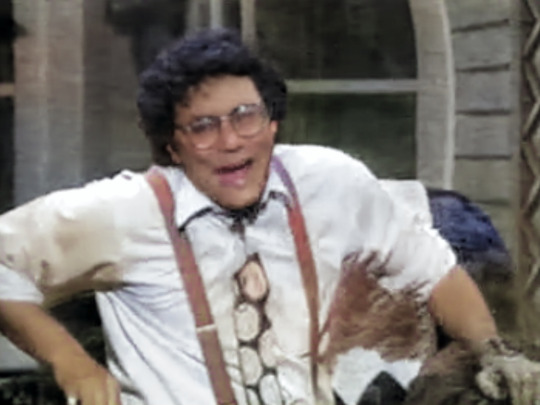





The Talent Pool
HA! TV Comedy Network
1990
"Performance Artist" was the term of art in the late 80s. As producer Christine Ecklund remembers co-creator Albie Hecht's definition, "...longer form material, no joke tellers. A downtown feel."
Monologist Spalding Gray had a hipster success with his performance piece (and eventual film) "Swimming to Cambodia." His recitation of his travel, writing and acting experiences, mixed pathos and humor to engaged audiences for several years in New York theater.
When MTV Networks launched HA! in 1990 we pitched channel head Debby Beece that among Gray's contemporaries were humorists with the goods that would hone the network's reputation with up and coming talent.
"The Talent Pool", an anthology of performance artists, set up shop in midtown Manhattan's Lamb's Theatre, site of a beautiful gospel brunch, and started casting. Between Chauncey Street and the network we settled on a pretty stellar bunch (pictured above from the top):
• John Leguizamo is a writer and actor who went on to win four Tony Awards, appear in over 100 films, and whose Columbian/Latino roots and community are always up front.
• Lewis Black, who's angry rants about history, politics, religion, and cultural trends eventually gave him a regular perch on "The Daily Show."
• Jim Turner became a star when MTV presented him as his creation ‘Randee of the Redwoods’, and later acted in movies and TV.
• Frank Maya was one of the first openly gay performers to gain a foothold in mainstream stand-up comedy, who sadly passed away from AIDS in 1995.
• Danitra Vance was a comedian and actress who came to great attention in the 1985 season of "Saturday Night Live." She was on The Talent Pool during her diagnosis and eventual death from breast cancer. She was awarded with an Obie and NAACP Image Award.
• Chucklehead was a troupe whose comedy addressed fears of the Cold War, entropy, mortality, and the likelihood not enough tickets would be sold at their shows.
• Julie Hayden was a delightful writer and actress who was later in Ben Stiller's "The Cable Guy" with Jim Carrey, She was finding her way in the TV pilot season when she died of cancer in 1997.
• Jeffrey Essman (not pictured) is often referred to as avant-garde, but he’s a hilarious writer, an often costumed performer and, a Benedictine monk.
• Barry Yourgrau (not pictured), a South African born writer and performer, has published several books and whose fictions have appeared in the New Yorker, Paris Review, VICE, Bomb, Poetry, Film Comment.
The show wasn't particularly highly rated, but we were completely taken by each of our fantastic cast and heartened when so many of them went on to highly visible and acclaimed careers.
.....
Created by Albie Hecht & Alan Goodman
Producers: Christine Ecklund, Craig Coffman
Directors: Craig Coffman, Dana Calderwood
Business Affairs: Elliot Krowe, Jim Arnoff
Executive Producers: Alan Goodman, Albie Hecht, Fred Seibert
Chauncey Street Productions, New York
#The Talent Pool#1990#HA! TV Comedy Network#HA!#Albie Hecht#Alan Goodman#Christine Ecklund#Elliot Krowe#Chauncey Street
0 notes
Photo
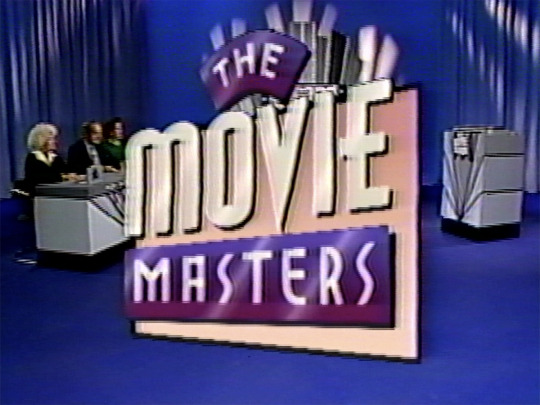

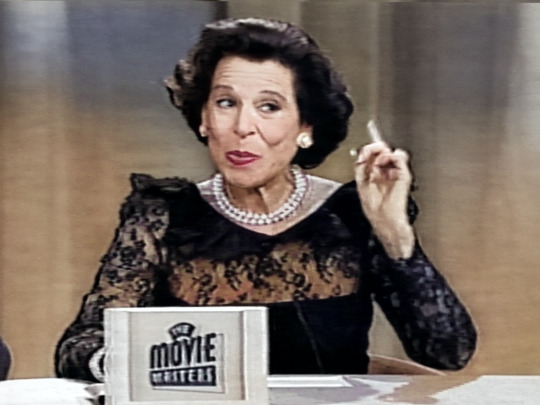

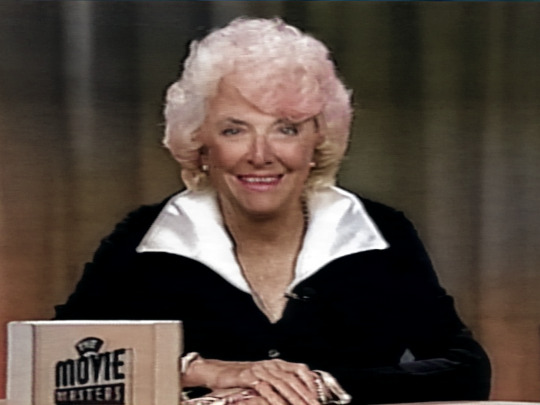
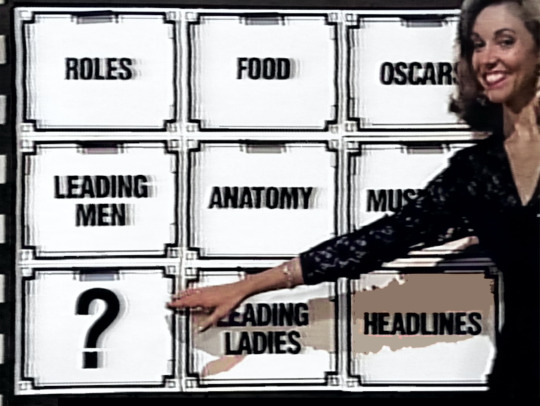


The Movie Masters!
for American Movie Classics 1989
Albie Hecht (executive producer & co-creator): “My favorite!”
Christine Ecklund (producer/writer): “Wow. Bet I can still answer every question. (“Ucipital Mapilary”)“
Before Mad Men, before Breaking Bad and The Walking Dead, AMC was actually “American Movie Classics,” the Turner Classic Movies of its time, a cable channel exclusively focused on, duh, movies from the heyday of Hollywood. (In fact, the former head of AMC programming created TMC.)
Towards the end of the 80s, channels that relied on acquired, cost efficient stuff like AMC (or Nick-at-Night or USA or even MTV) were realizing that advertisers and cable operators were on the hunt for programming that could excite viewers.
The Movie Masters was one of AMC’s first jump into the pool, and obviously, it wasn’t the approach that worked like crazy for them. Fred/Alan’s primary Showtime client, Josh Sapan, had become AMC’s leader and thought that our Chauncey Street Productions had an idea for a network series.
Original television production, even when it’s done efficiently, is pretty expensive. And the explosion of cable TV had exploded in terms of dozens of channels, but it was still trying to figure out how to make enough money to thrive. The financial picture wouldn’t really come into it’s own until the end of the 1990′s. All the networks we worked with over the years approached originals very gingerly, and American Movie Classics was one of the most, um, fiscally careful.
Well, Chauncey Street was a perfect fit for a deliberate situation. We were still feeling our way in series production and we were well aware we weren’t yet booking the big gigs.
Chauncey Street majordomo Albie Hecht loved game shows (CSP went on to produce Turn It Up! for MTV, Kid’s Court and GUTS for Nickelodeon, and Albie oversaw many more as president of Nickelodeon production). He and Alan created the idea for The Movie Masters, with the notion that it would recreate the salad days of broadcast network quiz shows.
To that end we ran dozens of casting calls at our office, talking to everyone from Betty Comden and Margaret Whiting, before coming to the conclusion that we’d replicate a classic quiz show line up (American Movie Classics, right!). The production landed on The Match Game’s Gene Rayburn as host, and actress and veteran quiz panelist Peggy Cass, New York Times’ theater critic Clive Barnes, and actress and To Tell the Truth stalwart Kitty Carlisle as contestants.
The production came off with only a few hitches and delivered on time and on budget. It was a hoot working with such revered acting, writing and television royalty. AMC would eventually find their way to “prestige” TV, but as far as we were concerned, we did a wonderful job in the name of the greatest movies of all time.
.....
Chauncey Street Productions, New York
Created by Albie Hecht & Alan Goodman
Producer/writer: Christine Ecklund
Executive Producers: Alan Goodman, Albie Hecht, Fred Seibert
Three of the original episodes of "The Movie Masters"
youtube
#AMC#American Movie Classics#Josh Sapan#The Movie Masters#1989#Chauncey Street#Albie Hecht#Alan Goodman#Fred Seibert
2 notes
·
View notes
Photo
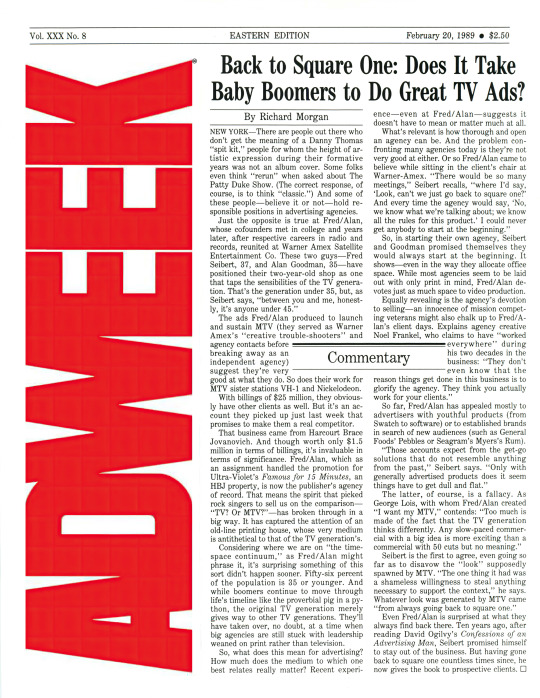
In 1989, Fred/Alan was going gangbusters, a couple years before having transitioned into a “full service” advertising agency. In addition to the branding, promotion and programming production and consulting we were doing for cable networks, we now had more writers and producers, account executives, art directors, media buyers, all the works needed to create actual ads instead of only on-air promos. We had no idea we’d be closing the shop in three years, sick of often ignorant clients and the ever reducing fees they wanted to pay us, that had become a part of the business. So, we were more than thrilled that one of trade bibles, ADWEEK, was interested in profiling our little company.
Back to Square One: Does It Take Baby Boomers to Do Great TV Ads?
ADWEEK
February 20, 1989
Commentary
By Richard Morgan
NEW YORK – There are people out there who don’t get the meaning of a Danny Thomas “spit kit,” people for whom the height of artistic expression during their formative years was not an album cover. Some folks even think “rerun” when asked about The Patty Duke Show. (The correct response, of course, is to think “classic.”) And some of these people –believe it or not– hold responsible positions in advertising agencies.
Just the opposite is true at Fred/Alan, whose cofounders met in college and years later, after respective careers in radio and record, reunited at Warner Amex Satellite Entertainment Co. These two guys –Fred Seibert, 37, and Alan Goodman, 25– have positioned the two-year-old shop as one that taps the sensibilities of the TV generation. That’s the generation under 35, but as Seibert says, “between you and me, honestly, it’s anyone under 45.”
The ads Fred/Alan produced to launch and sustain MTV (they served as Warner Amex’s “creative trouble-shooters” and agency contacts before breaking away as an independent agency) suggest they’re very good at what they do. So does their work for MTV sister stations VH-1 and Nickelodeon.
With billings of $25 million, they obviously have other clients as well. But it’s an account they picked up just last week that promises to make them a real competitor.
That business comes from Harcourt Brace Jovanovich. And though worth only $1.5 million in terms of billing, it’s invaluable in terms of significance. Fred/Alan, which as an assignment handled the promotion Ultra-Violet’s Famous for 15 Minutes, an HBJ property, is now the publisher’s agency of record. That means the spirit that picked rock singers to sell us on the comparison –”TV? Or MTV?”– has broken through in a big way. It has captured the attention of an old-line printing house, whovery medium is antithetical to that of the TV generation’s.
Considering where we are on the “the time-space continuum,” as Fred/Alan might phrase it, it’s surprising something of this sort didn’t happen sooner. Fifty-six percent of the population is 35 or younger. And while boomers continue to move through life’s timeline like the proverbial pic in a python, the original TV generation merely gives way to other TV generations. They’ll have taken over, no donut, at a time when big agencies are still stuck with leadership weaned on print rather than television.
So, what does this mean for advertising? How much does the medium to which one best relates really matter? Recent experience –even at Fred/Alan– suggests it doesn’t have to mean or matter much at all.
What’s relevant is how thorough and open an agency can be. And the problem confronting many agencies today is they’re not very good at either. Or so Fred/Alan came to believe while sitting in the client’s chair at Warner-Amex. “There would be meetings,” Seibert recalls, “where I’d say, ‘Look, can’t we just go back to square one?’ And every time the agency would say, ‘No, we know what we’re talking about; we know all the rules for this product.’ I could never get anybody to start at the beginning.”
So, in starting their own agency, Seibert and Goodman promised themselves they would always start at the beginning. It shows–even in the way they allocate office space. While most agencies seem to be laid out with only print in mind, Fred/Alan devotes just as much space to video production.
Equally revealing is the agency’s devotion to selling–an innocence of mission competing with veterans might chalk up to Fred/Alan’s client days. Explains agency creative Noel Frankel, who claims to have “worked everywhere” during his two decades in the business: “They don’t even know that the reason things get done in this business is to glorify the agency. They think you actually work for your clients.”
So far, Fred/Alan has appealed mostly to advertisers with youthful products (from Swatch to software) or to established brands in search of new audiences (such as General Foods’ Pebbles or Seagram’s Myers’s Rum).
“Those accounts from the get-go solutions that do not resemble anything from the past,” Seibert says. “Only with generally advertised products does it seem things have to get dull and flat.”
The latter, of course, is a fallacy. As George Lois, with whom Fred/Alan created “I want my MTV,” contends: Too much is made of the fact that the TV generation thinks differently. Any slow-paced commercial with a big idea is more exciting than a commercial with 50 cuts but no meaning.”
Seibert is the first to agree, even going so far as to disavow the “look” supposedly spawned by MTV. “The only thing it had was a shameless willingness to steal anything necessary to support the context,” he says. Whatever look was generated by MTV came “from alway going back to square one.”
Even FredAlan is surprised at what they always find back there. Ten years ago, after reading David Ogilvy’s Confessions of an Advertising Man,” Seibert promised himself to stay out of the business. But having gone back to square one countless times since, he now gives the book to prospective clients.
0 notes
Photo



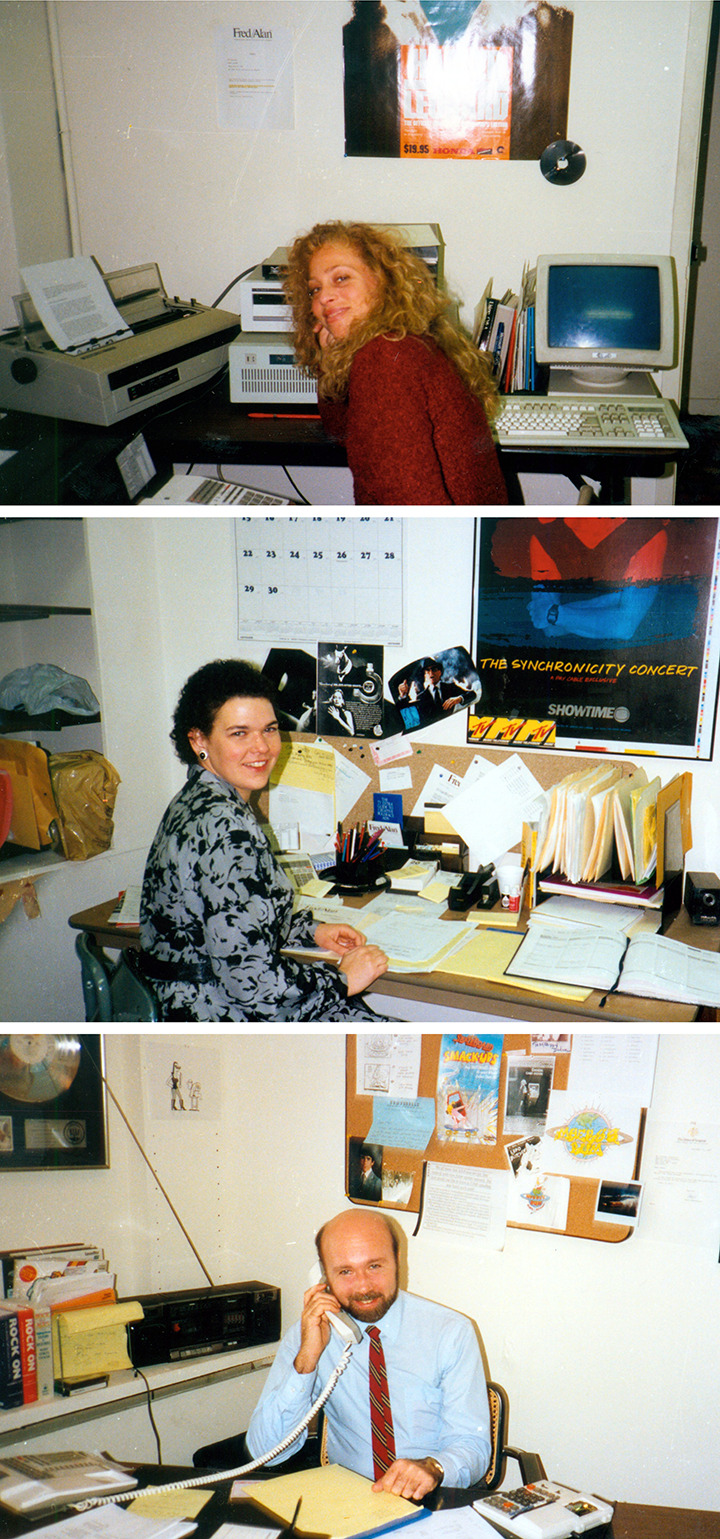
Hangin’ at 870.
The first Fred/Alan office was pretty funky. At the top of a mid-priced Manhattan, New York hotel at 870 7th Avenue, was a hastily assembled tower, only accessible by going to the top floor of the hotel and then squeezing into an elevator the size of a large phone booth.
When you got off on our floor –not for nothing, the original Jackie Gleason production company– you saw stucco stalactites above and pop art rug fragments from every floor in the hotel.

But, like any workplace it was the people who gathered that made the difference. Over the years we had three office locations and about 100 co-workers. On a lot of posts in this archive they get mentioned or credited, but it’s about time we showed some of them from 870 in photos taken around 1987.
Clockwise from the top left corner: Jessica Wolf, Ed Levine, Tom Leonardis, Tom Pomposello and Marietta Szubski, Lori Jacobsen, Nancy Nalven, Mike Shavelson, Elliot Krowe, Chris Strand, Albie Hecht, Janet Gutyan; Marietta Szubski; Nancy; Lori Jacobsen; Barbara Powers, Alan Goodman and Len Fischman.
#Fred/Alan#870 7th Avenue#Tom Pomposello#Ed Levine#Jessica Wolf#Tom Leonardis#Marietta Szubski#Lori Jacobsen#Nancy Nalven#Mike Shavelson#Elliot Krowe#Chris Strand#Albie Hecht#Janet Guytan#Barbara Powers#Alan Goodman#Len Fischman
1 note
·
View note
Photo

Before Fred/Alan.
Alan and Fred did a lot of work as employees of MTV before starting Fred/Alan in early 1983. Fred has covered some of it –a lot of it– on his personal blog over here.
1 note
·
View note
Photo
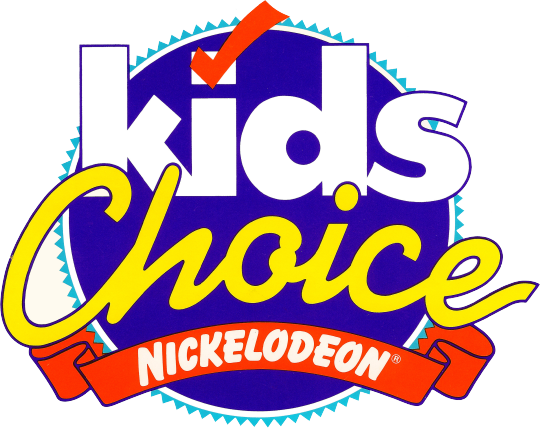
Chauncey Street creates the
Nickelodeon’s Kids’ Choice Awards
The blood was quickly draining from the faces of Gerry Laybourne and Debby Beece.
Chauncey Street Productions –Albie Hecht, Alan, Fred– was describing a scene of hopeful optimism of an annual kids' award show Nickelodeon should produce.
"There'll be the biggest movie stars in the world while 10,000 kids will be screaming at the top of their lungs!"
"But why will any stars come to a Nickelodeon kids' awards show?"
In 1988, Nickelodeon was only three years into its Fred/Alan revival. Even with the network at #1 in the ratings, Nick management was, smartly, still working like the channel was an underdog. It allowed the staff to keep their creative and business edges, striving to be the best.
As much as Nick had grown, the general perception was that The Disney Channel was bigger. It wasn't true, not by a long shot, but Disney clearly had a bigger brand name in the public's –and the media business's– imagination. So the underdog needed to keep up the pressure.
We thought an annual Kids' Choice Awards, executed well, could be Nickelodeon's nail in The Disney Channel coffin. After all, Nick was the most popular kids channel on television, by far. This show would be the proof, like ESPNs ESPYS and MTVs Video Music Awards had done for their channels.
Gerry and Debby became convinced, as did the MTV Networks higher ups, that with cable in 50 million American homes in the late 1980s, and Nick at #1 in the ratings (not to mention the dominance of Nick-at-Nite), in addition to kids, parents –and please, movie stars were parents too!– were more excited about Nickelodeon than anyone realized. And the chance to be in the presence of a live Nick show would draw out the crowds.
Alan: A nice detail is what Gerry told me years and years later. “When you guys told me the idea I thought I was going to throw up. I was so worried celebrities wouldn’t come because we were still new. But I also knew you were right and we had to do it.”
It was still an uphill battle to mount the show. Budget would be an issue for several years, convincing Universal's Hollywood theme park to give us one of their pavilions for free was, to say the least, a triumph of negotiation (we promised that we’d feature the tour in the show!). And those movie star guests? That took a while.

From the very beginning, we were thinking about what the actual physical award would be. Albie was drawn to the blimp version of Nick’s logo that Corey & Co. had designed for Fred/Alan. It was his brainstorm that insisted the dirigible would double as a kaleidoscope.
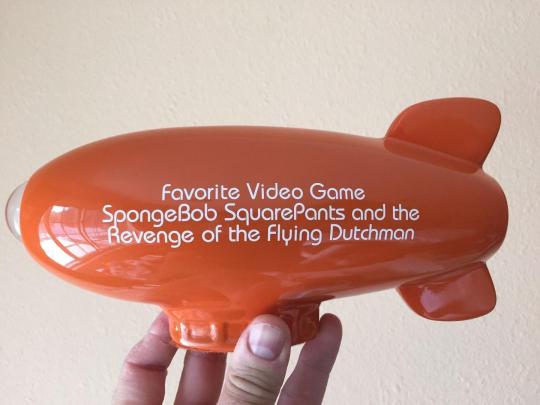

Dan Schneider, Debbie Gibson, Brian Robbins frightened by King Kong on the Universal Studios Hollywood tour KCA 1988
The first show host was Tony Danza, then flying high on "Who's the Boss," Nickelodeon network ID singers, Eugene Pitt & the Jive Five and pop sensation Debbie Gibson. And maybe most prophetic of all, guest presenters included stars of the sitcom "Head of the Class" Dan Schneider and Brian Robbins. "Prophetic" because Dan went on to create Nick's iconic live action comedies like "Drake & Josh," "iCarly" and "Zoey 101." And Brian? Well, after several years of being a hit television producer with partner Michael Tollin ("Smallville," "All That," "One Tree Hill"), in 2018 Brian became the president of Nickelodeon.
Alan: Other details: We couldn’t get Eddie Murphy that first year. We couldn’t even get Judge Reinhold to accept on his behalf. Thank goodness John Ashton did the appearance. (He was the cop sidekick.)
Also if I’m not mistaken Alf won best actor for TV. Hey, they were kids.
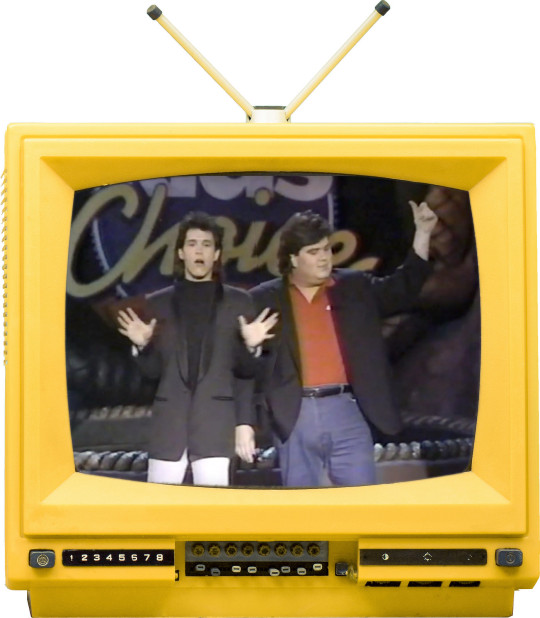
Brian Robbins & Dan Schneider KCA 1988
Albie went on to become the Nickelodeon's president of production where he produced all the Kids' Choice shows until he becamse Spike TV's founding CEO in 2003. Not for nothing, after a steady build, the 1998 10th Annual Kids' Choice Awards was held at UCLA's Pauley Pavilion. The sold out capacity? 10,000 screaming kids.
#Kids' Choice Awards#Chauncey Street#Albie Hecht#Alan Goodman#Fred Seibert#Universal Studios Hollywood#Brian Robbins#Dan Schneider
1 note
·
View note
Text
Part 2.3: How Nickelodeon became Nickelodeon became Nick-Nick-Nick-Nick-Nick-Nick-Nick-Nick-Nickelodeon.
•The Nickelodeon Brand Part 3 of 3
(Click here for Part 2.1 and 2.2)
How did Fred/Alan get Nickelodeon, the worst rated cable network in 1984, to #1 in January of 1985 and for the next 25 years?
A quick digression before we explain.
TV and video have had three distinct eras so far.
Era #1, Broadcasting. Three national networks and a few hundred local stations. Circa 1948-1980.
Era #2, Cable. Hundreds of channels delivered by satellite. Circa 1980-2005.
Era #3, Streaming. Starting with YouTube, then Netflix and the rest. Circa 2005-?
All three of these epochs have had their challenges in convincing people to use their products.
Back in the day, Fred/Alan we believed that the fastest path to ratings wasn’t only good programming, but that the best way for viewers to give shows a chance was to help them fall in love with the services we worked with, namely MTV and Nickelodeon. (Not for nothing, streaming services still don’t understand this, though AppleTV+ and Disney+ at least can rely on their pasts to kinda sorta persuade a few folks to love them.)
Back at Nickelodeon, once we’d explained how we could focus on four key promises that kids would understand and would hopefully encompass the totality of why they could love Nick, our challenge was to execute.
Media strategy always came first at Fred/Alan. Without knowing how often you could talk to the viewers, how could anyone make great creative. To make a long story short we developed a schedule that would tell our story with about 20,000 30-second spots every year. (Yes, 20 thousand.) Meaning that each one of our promises would be run about 5000 times.
If someone would be exposed only four messages, thousands of times, all year long, how could they possibly fall in love and learn about our shows? It wasn’t simple but then again, it was. Make sure that while the messaging was clear and consistent, make sure that the delivery of that message was constantly entertaining, constantly changing, and of course, delivered in a way that the viewers –in Nick’s case, kids of all ages– could like –dare we say, love?– and understand.
Nickelodeon’s first creative hire at our suggestion had been Fred’s first creative employee at The Movie Channel and had interned with Fred’s mentor, Dale Pon, so we knew he’d not only understand our strategies, he’d lead everyone else at Nickelodeon, including the management, into a creative nirvana that no one in kids television had ever visited before. (You can read more on Scott’s Nickelodeon’s tenure here and here.) Along with Scott, we brought in Tom Corey and Scott Nash to design a logo fit for television and then our favorite creative filmmakers to execute it like crazy.
We won’t bore with the hundreds of promos for the four brand promises (refer back to Part 2.2 for the details) the Nick promo team made under our direction. But here’s a few that could give you a sense of how we could suggest that clear, distinct and consistent language would be used day after day, year after year, and still keep everyone entertained, informed and in love. If you have any more questions about how Nickelodeon’s brand was established and burnished for 25 years, please let us know.
The First Kid’s Network
vimeo
The First Kids Network from fredseibert on Vimeo.
The Only Network for You
vimeo
The Only Channel for You from fredseibert on Vimeo.
Everyday
vimeo
Everyday from fredseibert on Vimeo.
"Everyday" was also the first prototype for Nick promotion in 1984.
It's What You Want
vimeo
What You Want from fredseibert on Vimeo.
6 notes
·
View notes
Text
Before Fred/Alan.
Alan and I started working together long before we started Fred/Alan in 1983. And afterwards too.
Here’s something we crossed paths on in 1974 –Alan gave me a hand mixing part of an historic recording– and then again in 2022, he wrote a insightful essay about the project. –Fred
Read the liner notes here, or download them from from Scribd.
1 note
·
View note
Text
Navigating the Fred/Alan Archive.

This Tumblr theme has no column for navigating through our stories. Here are the links that can help you easily find things you might find intriguing.
Fred/Alan was a small company that lasted about 10 years. We took clients –almost entirely in media– when we felt we had something interesting to offer that would help their audiences fall in love and build their businesses.
The Fred/Alan Chronology
Self Promotion
Press
Chauncey Street Productions
Alan Goodman on Wikipedia
Albie Hecht on Wikipedia
Fred Seibert on Wikipedia
The Real Fred Allen
Clients
Cinemax
Comedy Central
The Fat Boys
HA! TV Comedy Network
HBO
James Brown & Afrika Bambaata
Lifetime
Mosaic Records
Moviefone/777-FILM
MTV: Music Television
Myers's Rum
Nickelodeon
Nick-at-Nite
PBS/Thirteen
Quantum Media
Showtime
Swatch
The Movie Channel
Tommy Boy Records
TV Heaven 41
VH-1: Video Hits One
1 note
·
View note
Text
"Greetings from Gilbert” on Cinemax.
vimeo
"Greetings from Gilbert" on Vimeo.
{Shortly after we posted about our Gilbert Gottfried comedy special came the sad news that Gilbert has passed away.}
Cinemax presents “Greetings from Gilbert”
aka “Gilbert Gottfried...Naturally”
Thanks to Barbara Kanowitz, Gilbert Gottfried, the comic's comic, became MTV's first comedy star. It might not have propelled him as far as Jim Turner as "Randy of the Redwoods" by John Payson or Dennis Leary's iconic spots from Ted Demme, then again MTV wasn't as big in 1986. But, it did get Gilbert his first TV special.
Fred/Alan started life as a production company for TV shows. We’d never made a show, but we wanted to. After our decision to leave MTV we partnered with producer Buzz Potamkin to come up with a show for the Playboy Channel. Things went south with them after the third episode and we left. The good news is that we got ourselves agents. That’s the ticket, they’ll help us sell our shows.
Well, not really. The good news is they introduced us to Stu Smiley, another young’un who was trying to get things going. Eventually he became a comedy exec at Showtime, then at HBO, then he scored big. But in the meantime, we pitched him shows.
“Make it funnier!” he’d write on our scripts.
And then, one day, Stu gave us our big break. When we finally came up with the right talent, the right idea and the right director, Stu was there for us.
Fred Seibert: After ... ahem... interesting experiences creating a music video show for The Playboy Channel and producing the second Farm Aid concert for VH1, Cinemax's "Greetings for Gilbert" –our first real TV show production– put Fred/Alan, and our soon to be production partner Albie Hecht, on track.
The initial vision Alan and I had for the company was that we’d make TV shows. I was thinking about TV movies because we could own them. But Alan and I didn’t really have the heart for those, so comedies (and TV branding, to pay our bills) became our focus.
In 1986, MTV was in its first moment of maturing success (of course, I guess your age would determine whether you’d agree), with all music videos all the time. The promotion department that I’d started was being run by the expansively creative Judy McGrath who'd put together an incredible team that continually found new ways to express the rebellious, outsider spirit that was rock’n’roll. and, it was in the 80s that comedians and rockers really sealed their alliance that had always been there, but really blossomed during this first national cable TV era.
Writer/producer/director Barbara Kanowitz was one of MTV’s best. And Barbara’s the one who made Gilbert Gottfried famous.
One day, seemingly out of nowhere, an obvious New Yorker, a comedian in a blue tuxedo jacket, burst onto the screen at MTV, in a dozen or so short films. They were hilarious, for sure. But, from my perspective, as the architect of MTV’s “branding” strategy –aka, how to make the “M” famous– Gilbert Gottfried’s riffs weren’t only hilarious, they were on message. The promos banged our branding “promises” into your head without seeming like they were actually messages.
youtube
And Barbara’s directing and editing... the spots were gorgeous.
Barbara Kanowitz: I don’t really remember much about the origination of the spots, Gilbert didn’t have much of a following at that point. I do remember his William Morris agent selling him pretty hard.
I did know that Gilbert would be wearing his infamous blue tuxedo jacket and thought that it would pop against the white cyc (or maybe the white cyc was all we had the budget for – honestly, I don’t remember). Each spot had a marketing message that Gilbert was to espouse on. I asked him to speak to each marketing point the same way in different angles and locations with a locked camera so that we could pop him around the frame in post. Of course, Gilbert never repeated anything more than once, he just went off on tangents – which of course was the beauty of him and those spots.
I worked with Gilbert recently and it was nice to see him, he’s still as funny as ever.
Fred: We saw those spots, and like everyone watching MTV we fell in love with Gilbert. Maybe this would get Fred/Alan into the TV specials business!
Our friend Stu Smiley was a top comedy at HBO/Cinemax, which was then the top TV comedy venue, and he'd had been generous to us in many ways, trying to help us get something going. Without Stu, who knows where we would have been?
Alan Goodman: I always remember all the stuff around the show.
I went to see Gilbert almost nightly in the month leading up to the taping, at Catch a Rising Star or The Improv, to become super familiar with his set and talk about what to use. I never in my life saw a comic blow so hot and so cold. The very first time we saw him was at Caroline's original club on 9th Avenue in the 20s I think. I remember we went with Tommy Schlamme and his wife, and she was gushing after it was over. From his "thank you.. thank you.. no stop! stop!" that started the show until he left the stage, the laughter never stopped for a second. Continuous, deafening laughter. Other times, there'd be crickets.
He got into the habit of coming to the office in the afternoon, and planting himself in my office until it was time to go out. He'd sit there all afternoon telling me jokes. Gilbert doesn't much tell jokes in his act, but he knows a trillion jokes and he would just go non-stop. One day he was telling me how much he dislikes Seinfeld, who was just another guy in the clubs back then. He started imitating Seinfeld, but without the jokes. "Did you ever wonder why a pencil has an eraser only on one end, and not the other? What's up with that?" Again, he wouldn't stop and his impression was spot on. That night at Catch, he couldn't get one laugh. Not one. It was a terrible crowd. Out of nowhere, unannounced and unexplained, he just started doing his joke-less Seinfeld. For me. Because he knew at least one person would be laughing.
When we had wrapped, he continued to come to the office for a few weeks, to sit in my room because he had nothing else to do all day. Eventually I had to tell him I had moved on to other projects. I remember he never stopped by without leaving with a couple of pens, a pad of paper, whatever he could carry out of there.
The reason behind the baby blue dinner jacket is that he had established something of a presence in the fabulous rants Barbara Kanowitz Small had developed with him for MTV. That was his wardrobe for those spots and we wanted to piggyback on the recognition.
I also remember a couple days before the shoot Tommy was very ill. There was some talk that I would have to direct. Thank goodness he recovered, because I would really have fucked this up.
I found a video tape of this show, credited to FRED/ALLEN Inc, on HBO Video in a bargain bin years later, paired on the same tape with his "Norman's Corner" produced by our pals Peter Rosenthal and Steve Oakes, written by an equally unknown Larry David. I have it still shrink-wrapped with the price sticker, $2.95.
This was also the show when I learned that, if the network tells you "We don't pay a lot of money for these comedy experiments, but we leave you alone, you don't get a lot of notes," it means you won't get much money, and you will still get a thousand notes.
I wonder what happened to the LP we made from the special that QMI Music was going to release? Gilbert and I traveled down to Memphis together for the launch party of QMI, and as we were walking through the airport he looked around at the distinctively Southern Christian inhabitants. "Somewhere in this airport is a digital counter," he said, "and when you and I got off the plane it clicked up to three. When we go back to New York, it'll go back down to one."
Albie Hecht: Wowser! - (You know, Gilbert will probably ask us for additional payment!)
"Best set I never built!"
I walked into American Place Theatre and they had a Sam Shepard play which had an amazing Airstream trailer in a desert and I said I’ll take it!" - made the deal to keep it for our show.
"We're always working with first timers!"
Tommy Schlamme who was an amazing film director had rarely done multi-camera shows so of course we chose him to direct since we knew he had great comedic timing and creative pov. Which was true and made this show so successful but when we began shooting and he starting calling the cameras and called for camera 2 - there was dead silence in the truck - and then the TD said "We're on 2 " - without a losing a beat Schlamme says " and stay on 2 -, its a beautiful shot " and for then on he was perfect.
"Working with the unpredictable!"
Gilbert was and is a unique and special talent. When he walked out of the trailer at the top of the show and immediately went to his water pitcher and says "I’m having a glass of water," the audience broke into big laughs and we thought - we're home free - But then he kept repeating it "I’m having a glass of water " - After the third time, i looked at Alan in the truck and said "we're F-ed" - but Al was cool and said "wait for it" and after Gilbert repeating it another 3 times, the audience started roaring and that actually went on for 10 minutes.
Not all of it made the final cut but a big moment ( and learning moment ) !!!
Alan: A story I have told many times is about our ACE Award for the special.
Yes, the Airstream was already there, and it's a small detail but we couldn't move it because we shot during a two-day hiatus of a play that was in theater. The play was coming back, and we were told we couldn't move it. Instead, we built around it. And thanks to the pre-existing Airstream (and some additional dressing by Bob and Jimmy), we got our first ACE Award... for set design!
Fred: “Greetings from Gilbert” was a eureka! moment for us. Alan, Albie and I started to think it was more than a dream. We actually had a future in this business! We started Chauncey Street Productions as our label for the shows we would go on to produce.
Ah, show business!
.....
For some reason the credits for “Greetings from Gilbert” didn’t make it into IMDB. (Yet. We’re fixing that now.) So, for history, here’s the team that got this thing done. Thanks all!
Cinemax presents “Greetings from Gilbert”
Starring Gilbert Gottfried
Directed by Thomas Schlamme
Executive Producers: Alan Goodman & Fred Seibert
Producer: Albie Hecht
Associate Producer: Jeffrey Alan Beer
Production design: Robert Small
Lighting designer: Randy Nordstrom
Art director: David George for RSE
Set supervisor: Jim Burns
Camera operators:
Manny Gutierrez
Juan Barrera
John Feher
Jim Scurti
For The Camera Group
Technical director: John Fortenberry
Assistant director: Jeffrey Alan Beer
Stage manager: Juli Pari
Production coordinator: Rie Koko
Post production supervisor: M.B. Hagner
Audio: Randy Ezratty for Effanel Music
Show open camera operator: John Hazard
Show open audio: Larry Nelson
Make-up: Fran Kolar
Wardrobe: Julie Anderson
Still photographer: Elena Seibert
Stagehands:
Richie Tattersall
Eddie Giffenkranz
Chris Fedigan
Michael Yoscary
Alan Stieb
Videotape editor: John Fortenberry
Graphic artist: Sharon Haskel
Audio post production: Ken Hahn/Sync Sound
Fred/Alan Production Manager: Steve Shepard
Assistant to the producers:
Daria McLean
Jessica Wolf
Production assistants:
Emily Wolfe
Chris Stand
Kew Yao Agyapon
Hyra Goldberg
Jeffrey Dinces
Production interns:
Nick Avrameas
Jeff Samet
Maria Tecson
Wendy Loeser
Janet Gutyan
Video Remote Facilities: Rebo Associates
Lighting Equipment: See-Factor
Video post production: Broadway Video
American Place Theatre:
Joanna Vedders
Alfred Miller
Bob Katz
House audio: Peggy Freitag
Trailer design: Chris Barreca
Special Thanks:
Lucy Aceto
Wm. Morris Agency
Scott Blakeman
Billy McDonough
IA Local One
Caroline Hirsch
Campbell McLaren
Peggy Reed
Michael Dugan
Barbara Kanowitz
Judith Mcgrath
Management: Ellis/Simone Management
Live Show Produced in Association with Caroline’s
A PRODUCTION OF FRED/ALAN INC. & SCHLAMME PROD. INC.
©1986, Gilbert Gottfried. All rights reserved.
A Cinemax Presentation
#Gilbert Gottfried#Cinemax#HBO#Albie Hecht#Alan Goodman#Fred Seibert#Thomas Schlamme#1986#Chauncey Street
3 notes
·
View notes
Photo

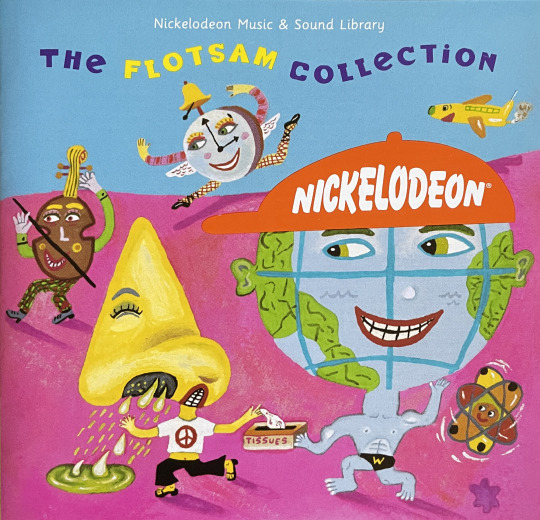
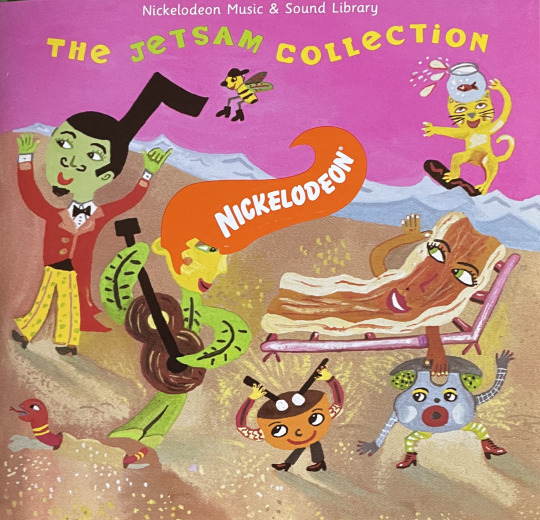
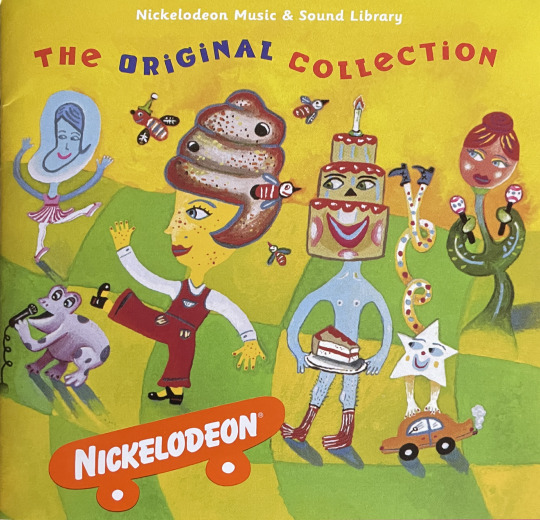
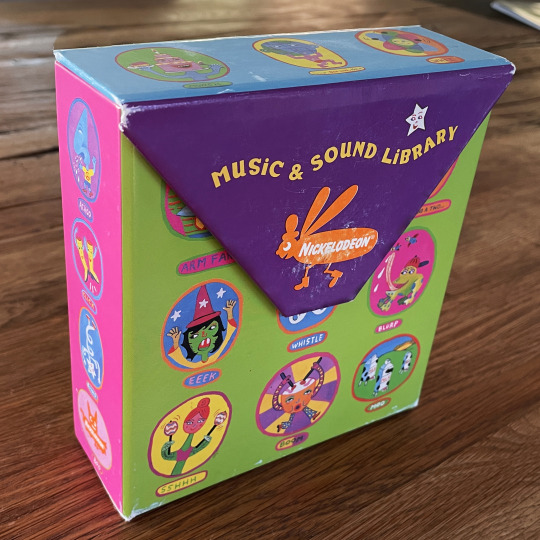
The Nickelodeon Music & Sound Box Set and CDs
The Nickelodeon Music & Sound Library 1996
In June 1984, Fred/Alan booked it’s first major job, the turnaround of Nickelodeon. MTV Networks boss, Bob Pittman, asked Fred and Alan to try and bring their perspective to helping the kids channel climb out of the ratings basement it in which it found itself.
Aside from the strategic thinking we brought to programmers Gerry Laybourne and Debby Beece, we knew we needed some executional magic. And since we had a counter intuitive philosophy for a visual medium like television –that is, innovative visuals and programming should leap from the sound– we started a brainstorm as to what Nickelodeon should sound like. The amazing pictures would follow when the animators were inspired by the music.
We were fascinated with bringing back the jingle sounds of Top 40 radio. We finally got there in the early 90s on VH1, but at the Nickelodeon moment we were focused on a sound that in our little minds was a spin-off/adaptation of jingles. That is, the a cappella singing of Black Americans. We’d already experimented for The Playboy Channel and Showtime with our new friends Eugene Pitt and The Jive Five. We loved the results and realized Eugene’s group could be the perfect engine for Nickelodeon. (Most of the tracks on The Nick Nick Nick Collection below are the soundtracks of these aninmations.)
With little prompting, Fred will recall the moment that Alan improvised on the opening of The Marcels’ “Blue Moon“ ... “Ni Ni Ni Nick-el-o-de-oooonnn!” What kid could resist it?!
Alan went on to finish the now classic song with our colleague (and my former record company partner) Tom Pomposello and Eugene, and the rest is a small part of television history. (I can’t think of any other TV network that had such wonderful music [or any actual music] as its branding centerpiece.)
A decade later, Fred/Alan had closed, but Tom continued to produce special work for Nickelodeon, Nick-at-Nite and other cable channels. And Nick’s super smart, super talented worldwide creative director, Scott Webb, commissioned song after sound after song, eventually there was enough that he thought it was time to collect it all for the then global Nickelodeons to use whenever they saw fit.
You can hear it all if you scroll to the bottom of this post, and right below here is the transcript of the essays by Tom and Scott included with the CD booklets included in the box set.
.....
When Geraldine Laybourne inherited the top position at Nickelodeon, the network had the unpopular reputation (with kids) of being the "good for you" channel. Parents thought the idea was great - but their kids wanted nothing to do with it. Her job was to tum Nickelodeon around and make it a place that really was for kids. For help she turned to one of the most media-savvy companies in the industry - the New York-based Fred/Alan, Inc. Partners Fred Seibert and Alan Goodman headed up a brain trust/consortium that specialized in creating network identities. Their track record was impeccable, having helped launch the wildly successful MTV (Music Television). At that time, I was a producer/creative director and composer associated with the company and the three of us immersed ourselves in our new Nickelodeon challenge.
Creating an identity for a network is almost like inventing a person. You have to decide what they'll look like, what they'll sound like and what they'll say. From the outset, we agreed to place equal emphasis on developing a visual style and an audio sensibility. Both qualities had to be appealing and unique to Nickelodeon.
Much of my work with Fred and Alan revolved around sound design ... and so began a series of great freewheeling conversations about what the sound basis of Nickelodeon would be. We started tossing around ideas and what kept coming up was doo wop music. The more we talked about it, the more sure we felt doo wop would be the ideal sound for a kids' network.
Doo wop developed as street-corner singing. It was a people's music. You didn't need expensive electronic studio equipment you just needed your vocal chords and a desire to make sound: a natural for kids. Anyone could sing along with those doo wop nonsense syllables. And the beauty of using "antique" doo wop harmonies as a signature for a kids' network was that, for kids in 1984, it was a brand new sound! Unlike what their big brothers or sisters were listening to on the radio, this music was just for them.
One of our friends, Marty Pekar, had recently started a record label and was working on a revival of doo wop music. He was nuts about one of the groups he was recording: the Jive Five. We all remembered their hit records from our teen years - "My True Story" and "I'm a Happy Man" (the latter was perhaps the last doo wop record to make the charts, and was a hit in 1965 while the Beatles and the British invasion were in full swing). It wasn't long before I started working with the great gentleman of doo wop himself, the leader of the Jive Five, Eugene Pitt.
Now, Eugene is one of the finest singers who ever emerged from the genre. He can sing baritone or falsetto, but he's as good a lead singer and doo wop balladeer as has ever been. Eugene truly is the unsung (pun intended) hero of the Nick sound and his contribution to Nickelodeon as a singer and lyricist can't be overstated.
One of the best choices we made was to work with this real-life street corner rock 'n' roll group, rather than studio musicians or jingle singers. This was honest-rootsy-gritty-folksy-get-down-and-be-real a cappella singing. Kids intuitively know the difference between real and sanitized. And we committed ourselves to always be authentic in our communication to our audience.
The other coup was the decision to treat "Nickelodeon" as a sound rather than a word. (Who knows what a "nickelodeon" is anyway? To kids, it's just a funny-sounding word.) Entire songs were written in which "Nickelodeon" was the only word. Playing with the word "Nickelodeon" musically turned it into the ultimate audio logo - as distinctive and infectious as a jingle, without any offensive sloganeering attached. Just pure, lively, good-time doo wop.
Once our doo wop tracks were married with the also-celebrated animated IDs, the ftnishing touch was sound effects. The initial sound effect tone (this time no pun intended) was set by the wild English sound effects maestro, Tom Clack, of Manhattan's Clack Studios. Tom is a veteran of the BBC and has created sound effects for about a million radio commercials as well as for TV and film soundtracks and record albums.
It was in Tom's studio that we post-scored many of the 10-second tracks for the original animated Nick network identity spots. Though there aren't many of these tracks represented on these CDs, it was Tom's comic sensibility and wacky perspective that informed the whole evolution of the Nick sound. He knew just how and when to punctuate the tracks with a sonic A-bomb or a sublimely subtte splat. ("Sound effects are funny when they're in sequences of threes," he once told me. "Listen. It's 'boink-thwap-plink:' If you just go 'boink-thwap,' it feels quite unsatisfying.") The "Doo Wop Meets Sound Effects" music style is mainly reflected on disc one of this collection [The Nick Nick Nick Collection]. Discs two [The Flotsam Collection, The Jetsam Collection] through four [The Original Collection] contain music inspired by those early tracks.
I saw that a big part of our job was to develop an audio identity for a kids' network that really spoke to kids. Our solution was the marriage of doo wop and wacky sound effects. It was one distinctive, unique way we would communicate the "voice of Nickelodeon."
Did it work?
I'll never forget the time I was walking down Tenth Avenue in Manhattan. It was the spring of 1985. On the street where these little girls jumping rope and keeping time singing "Nick-Nick-Nick:-Nick-N-NickNick-Nick, Nickelodeon." I thought to myself: "Well, I always dreamed of producing a hit record, but little did I imagine it would be the theme to Nickelodeon!"
Tom Pomposello Music Director/Producer/Composer
…..
Tom Pomposello talks about successfully solving a problem using doo wop for Nickelodeon, but the real success was recognizing the power of sound. Sound is often overlooked in creating television and it is often more powerful than people think. For example, you can have your head buried in the refrigerator looking for a snack and miss what's on the screen, but you can't avoid the audio as easily. Sound and music also make a deep emotional impression, like the songs you learn as a kid and never forget.
It shoutd also be noted that it took guts for Gerry Laybourne and Debby Beece to approve the use of doo wop and wacky sound effects for the Nick sound. They originally wanted to go with something more traditional and expected. In any creative endeavor, it takes courage to take risks and be unconventional, but the rewards can be spectacular.
Since the introduction of the Nick doo wop sound in 1984, many talented composers and musicians have built upon and diversified Nick's aural identity. We have always tried to stay away from mercilessly surfing the popular trends in kids' music. Instead, at the heart of our personality there has always been humor, surprise, play, and a love and respect for kids.
The music and sound on these CDs are powerful tools for communicating Nickelodeon's personality. Consider sound as you go about solving your strategic and creative problems, whether you µse these CDs as tracks, elements or inspiration.
Have Fun!
Scott Webb Creative Director, Nickelodeon Fall 1995
.....
Co-conceived by Scott Webb and Tom Pomposello
Executive producer, Creator Director: Scott Webb
Produced and Directed by Tom Pomposello
MUSIC
Production coordination & management: Barbara Powers
Production assistance: Melody Ann Mora
Digitally remastered and processed for CD by Danny Cavacco, This Way Studios, NYC
DESIGN
Art Director: Laura Hinzman
Designer: Masaka Moribayashi
Illustrator: Sarah Schwartz
Project Manager: Wendy Larrabee
Production Manager: Nancy Morelli
Mechanical Production: Kevin Gepford
Pomposello, Inc. wishes to thank Eugene Pitt and the Jive Five, Fred Seibert and Alan Goodman, Tom Clack, Beldeen Fortunado, Marc Chamlin and Geraldine Laybourne
Nickelodeon wishes to thank Robert Farro, Tom Harbeck, Greg Harrell, Lisa Judson, Anne Kreamer, Kim Rosenblum and Dennis Shinners.
…..
NOTICE TO NICKELODEON PRODUCER/PERSONNEL:
Use this music as much as you wish. And remember, each us requires you to file a music cue sheet or music usage report with MTV Networks, ASCAP & BMI title, timing, type of use, composer(s) & publisher(s). It’s a mandatory requirement of compliance.
…..
©1996, Viacom International, Inc. All rights reserved.
For promotional use only. Not for sale.
Fred Seibert
·
The Nick Nick Nick Collection
>
Fred Seibert
·
The Flotsam Collection
Fred Seibert
·
The Jetsam Collection
The Original Collection
#Nickelodeon#Scott Webb#Tom Pomposello#Alan Goodman#Eugene Pitt#Jive Five#branding#Doo-Wop#music#jingles#1996
52 notes
·
View notes
Video
vimeo
I Want My MTV ... Back! 1986
The cable wars begin.
Over the last few years it feels like the fights between cable programmers and cable system have become an almost everyday occurrence. But by midway into the first decade of real consumer cable, a negotiation fight breaking out in public between channel owners and cable system owners was a shocker. They were almost always stoked by the "Darth Vader” of system owners, John Malone of TCI in Denver, at the time the largest cable operator in America. And, he was never shy about using that power to get the deals he wanted.
The cable wars really began around MTV. And MTV won.
The hard won fight was initially with MTV and ESPN, asking/demanding a “per subscriber” fee from cable operators to subsidize the cost of giving them quality programming so that cable could compete with the giant broadcasting networks of CBS, NBC and ABC. But, as you can imagine, the operators were never happy with the arrangement –even though with each new channel the operators would increase the home owner’s cable bill for that price and then some– and for the last 40 some odd years have often tried to reduce the freight of their wholesale costs.
In 1986 the negotiations almost came to an abrupt halt when John Malone said, in effect, “Fine, we don’t need your stinkin’ channel, we’ll shut it off.”
But Bob Pittman, fearless fighter that he is, was not going to take that lying down. Who cares if Malone controls 25% of all the cable homes in the country?! We control the most loyal viewers on television! Was Pittman right? John Malone and the rest of the media industry was about to find out.
First, pretty much overnight we made a spot and started running spots on MTV and VH1, and buying commercials. “If you flip to MTV or VH1, you might not find it.” But that was just the beginning.
MTV corralled the most powerful weapons in it’s arsenal, the rock stars. Anyone that was available in New York or Los Angeles on a moments notice was conscripted. Phil Collins, Billy Joel, Rod Stewart and Paula Abdul, giants of that moment were among those that showed up.
Alan and his team came up with an undeniable visual, all the stars filmed in stark black & white, bathed in shadow.
“Suddenly, everything changed. One minute there was music, the next minute... none. Just like that, they took off MTV. The local cable company, the guy you pay every month. Is it fair to take your MTV away? I think if we all put the pressure on they’re going to have to change their mind. If your MTV is missing, call them. I’d call. Tell them, ‘Don’t make decisions for me. Tell ‘em ‘I want what I paid for. Tell ‘em, “I Want My MTV... BACK.”’“
Wow. The spots really packed a wallop, as you can see and hear. Notice the not to subtle references to the original “I Want My MTV!” campaign that sparked the pop revolution.
“Demand!”
“Call!”
“Your MTV!”
And the capper? Bob threw a free rock concert with MTV stars in Malone’s Denver backyard.
Needless to say, MTV was turned back on in a damn hurray. For the past 30 years other programmers have tried similar moves. But until the Super Bowl was threatened –and that was broadcast not cable– the operators were able to beat back most of the efforts.
MTV wins. Actually, it must be said, Pittman wins!
No one else in cable programming really understood the power of consumer loyalty. The conventional wisdom in media had always been that if you had a captive audience that delivered your channel high ratings, it must be that the audience just loves you. There was no one else on cable, until an MTV cadre of executives went to ESPN in the 90s and nurtured their fan relations, who really understood loyalty. Allegiance, faithfulness, fidelity, that’s what it’s all about.
Alan remembers: “The 'I want my MTV back' campaign is interesting because of how many other networks tried to do the same thing when THEY got kicked off during contract negotiations, and utterly failed. The fact is, “demand” was something that always worked for MTV ever since the launch because our viewers felt locked out. Do you think a lot of Lifetime viewers were motivated to grab the phone and call their cable operators when their signal went off?
“I remember Tom Godici, then one of our fantastic, but junior, art directors, with this campaign. I was slated to go direct one of the stars –can’t remember which one– and I walked into Tom’s office and told him to go instead. He was a little surprised and nervous about it, but I told him I trusted him and knew he could do a good job. I loved that about our agency, that we would give people a shot.”
Read about the original “I Want My MTV!” Part 1, Part 2, Part 3 and some of its aftermath Part 4, Part 5
.....
“I Want My MTV...Back” 1986
Client: Bob Pittman
Agency: Fred/Alan, New York
Executive creative directors: Alan Goodman & Fred Seibert
Film directors: Tom Godici & others
#I Want My MTV...back#IWMM#MTV#vh1#Bob Pittman#Tom Godici#John Malone#TCI Cable#Phil Collins#Paula Abdul#Rod Stewart#Billy Joel#advertising#consumer#commercials#TV commercials#1986
32 notes
·
View notes
Video
vimeo
Our first job.
Showtime’s Got Rock!!! 1984
We quit our jobs at MTV Networks on Friday, April 8, 1983 and opened Fred/Alan at 870 7th Avenue, New York City on Monday April 11. MTV was about to hit it’s peak with Michael Jackson’s Thriller video at the end of the year. And we didn’t book our first assignment for almost a year.
Sure, we’d already done a TV show, sort of. MTV and music videos were the hottest thing since The Beatles hit the US in 1964 and everyone wanted in on the action. Even The Playboy Channel, who’d hired us to do “Playboy’s Hot Rocks,” a show of the “uncensored” videos of Duran Duran, David Bowie and the like.
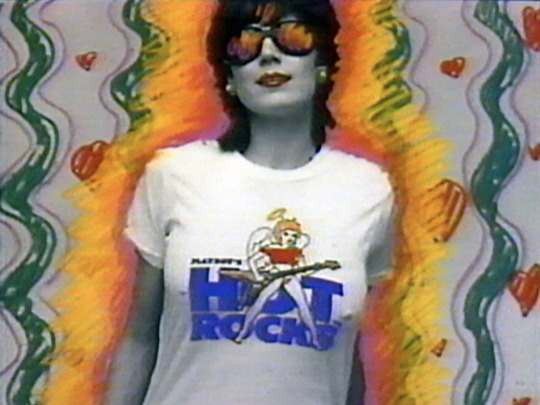
Well the powers that be at Playboy decided the videos just weren’t uncensored enough and without the legal rights re-edited the episodes we turned in with random slugs of naked human video. That was the end of that, we figured the record company lawyers would take care of the rest.
We had no contacts in television so we went about getting some. Over a year after going into business, one of them, Showtime’s Josh Sapan, took mercy on us and threw us a bone.
Showtime was, it’s now safe to say, a bit late to the trend party of music video, given that HBO had been showcasing top rock concerts for years. In mid-1984, they booked the US Festival, a big johnny-come-lately outdoor, multi-day show sponsored by mega-fan Steve Wozniak. Fred/Alan, being the only freelancers around who had rock video experience. No, Fred had never written an MTV promo and Alan had only produced all the animation. But we let Josh have his fantasies and took the job anyway.
The fun parts of the job? Our MTV logo friends Manhattan Design did the illustrations. Alan’s former assistant, Susan Strong, did the shouts.
Alan: “I stole the idea of using Sue Strong from another Sue –Soozin Kazick, I think her name was– who was this super cool assistant at Crawdaddy Magazine when I was writing record reviews for them. I was fascinated by the fact that she had also been one of the girls who cooed "Frankie" before Frankie Crocker's radio show on WBLS [New York], ‘the black experience in sound.’”
And Jerry Carroll, famous then in New York for his “the prices are INSANE!!! at Crazy Eddie’s” commercials, was a charm to work with on the voice over announcing.
Obviously, it went well enough. Fred/Alan entered a decade long, fruitful relationship with Showtime and their recently acquired, Fred’s former home, The Movie Channel. Thanks Josh!
…..
Showtime’s Got ROCK! 1984
Client: Josh Sapan
Agency & Production Company: Fred/Alan, Inc. New York
Executive creative directors: Alan Goodman & Fred Seibert
Illustration: Manhattan Design
Vocal exclamations: Susan Strong
Announcer: Jerry Carroll
2 notes
·
View notes